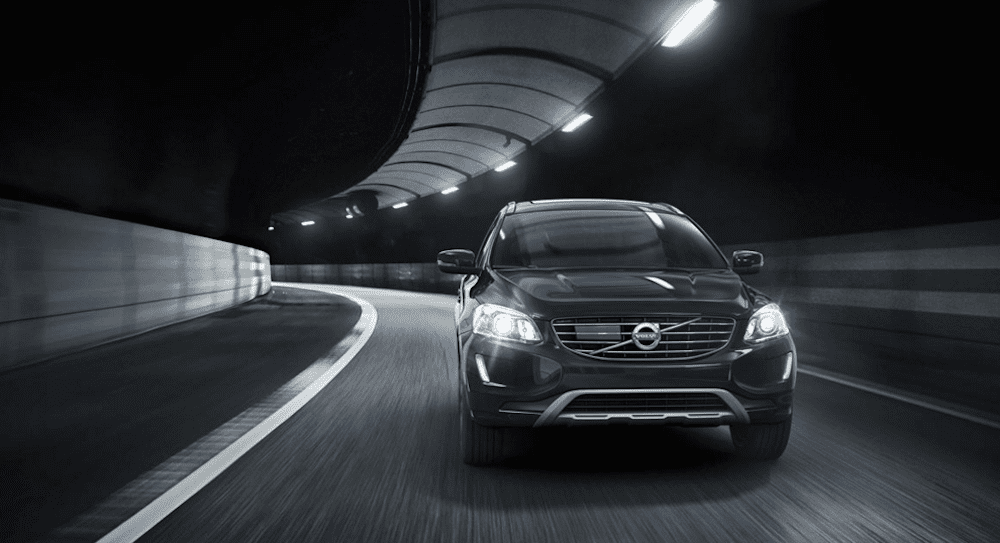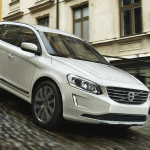We’re barely into 2016, and the Volvo XC60 has already started to rack up awards. The nameplate’s consistent, stylish design is obviously returning, and the engineers also included a variety of new technologies, including Intellisafe (manipulates cars braking when sudden stops are required) and Sensus (the brand’s next generation infotainment system).
Of course, we wouldn’t be where we are today had the brand never released the concept SUV almost a decade ago. The vehicle hasn’t changed a whole lot over the past nine years, with the XC60 still retaining much of its style and durability. The vehicle has seen several revamps, however, and the brand even teased a hybrid concept.
Whether you’re simply a fan of the vehicle or you’re actually shopping for a Volvo XC60 in New Jersey, let’s take a brief look back in time to when the Volvo XC60 first hit the market…
Early Days
In 2007, Volvo unveiled their XC60 concept at the North American International Auto Show. This was the vehicle that would eventually evolve into the XC60 we know today. The XC60 concept included a glass roof, a brand new grille, and (perhaps most notably) a larger Volvo logo that included a ‘V’ that was shaped into the design of the vehicle. This inclusion was part of the brand’s desire to include their ‘DNA’ in each of their vehicles. The mechanics were highlighted by brand new shifting technology, an electronic boot lid, and eye-catching 20-inch wheels.
“We need to be recognizable as Volvo,” design director Steve Mattin told MotorTrend.com at the time of the release. “We’re still about Scandinavian simplicity; we can’t be playful or do styling for the sake of styling. Volvos last a long time, so our design must have legs. But we can’t be too simple or we’d edge toward blandness. And we can’t not change; we must be fresh. I want to broaden our design and have more variation between car lines.”
Initial Release
The actual production vehicle was first shown at the 2008 Geneva Motor Show, with European sales beginning soon after. The SUV was finally released in North America as a 2010 model in 2009, and it boldly entered an impressive and competitive subcompact segment.
“In order to succeed in that kind of competition, you have to create a vehicle that stands out from the crowd,” said former CEO Fredrik Arp. “The new XC60 bases its unique appeal on the synthesis between daringly sporty design and a range of intelligent safety systems that help the driver avoid accidents.”
Engineers used the Volvo Y20 platform as a basis, and they borrowed technology from the 2007 Land Rover Freelancer. Several 3.2-liter engines were used throughout the first few years, with horsepower and torque generally hovering around 240 and 320 pounds-feet, respectively. The crossover was commended for its handsome exterior and rugged drivability.
“This car is charged with more emotive form and more energy than any other Volvo,” Mattin said in a press release. “We’re elevating our design DNA to an entirely new level by literally turning up the visual volume. If you say that you’d recognise a Volvo from 300 feet away today, I dare say the XC60 radiates a clear Volvo presence from at least twice that distance.”
Of all the SUV’s attributes, the XC60 was particularly known for its safety features. The vehicle included curtain airbags, whiplash protection technology, side impact protection technology, stability and traction control, hill descent control and a collision warning system. The most notable inclusion was the new City safety technology, a new driver-support system that helped prevent collisions. With the help of built-in sensors, the system could automatically apply the brakes when an accident was imminent.
“Volvo is the first in the world to offer this type of feature as standard,” said Arp. “City Safety clearly signals that the new XC60 is the safest car Volvo has ever produced. The car is packed with our accumulated safety know-how and technology, both when it comes to preventing accidents and protecting all the occupants in a collision.”
These various safety features help contribute to the SUV earning the best possible ratings in the four Insurance Institute for Highway Safety tests as well as perfect five-star scores in six National Highway Traffic Safety Administration tests. These accolades have continued over to the recent XC60s, with the vehicle winning the IIHS’s 2016 Top Safety Pick+ Award.
“Volvo continues its strong tradition of safety” said Lex Kerssemakers, the current President and CEO of Volvo Cars of North America, “it is a tradition that is core to how we do things and our vision for the future.”
“Our vision is that no one should be killed or seriously injured in a new Volvo by the year 2020. Our recognition as the luxury automaker with the most IIHS Top Safety Pick Plus awards is another milestone in the journey toward that vision.”
Hybrid Concept
At the 2012 North American International Auto Show, the brand showed off their plug-in hybrid concept, which offered an all-electric range of 35 miles. This range was the equivalent to a 105 mile per gallon fuel efficiency and a 600-mile range. The XC60’s fuel economy was at 50 miles per gallon when relying solely on the gasoline engine.
“The technology in the XC60 Plug-in Hybrid Concept is as ingenious as it is unique,” said Stefan Jacoby, the former President and CEO of Volvo Car Corporation. “You can make really green progress on the road without compromising on any of the luxury car’s renowned properties. No other manufacturer has succeeded in delivering fuel economy and electrical range on this level in a capable, spacious performance car with 350 horsepower on tap.”
Changes Over the Years
While the vehicle hasn’t advanced to a next generation, it still overwent a pretty significant revamp for the 2014 model. The exterior saw the additions of a new grille and front driving lights, and the exhaust and taillights were also changed up. On the inside, customers would find improved upholstery materials and dashboard trim, as well as a new seven-inch touchscreen display.
The 2016 model has seen several changes, with specific revamps coming to each individual model. For example, the T5 Drive-E version no longer features a digital compass, but engineers included a new stand-alone option and impressive 19-inch “Lesath” alloy wheels. Several new colors will also available on the XC60, including magic blue metallic, osmium gray metallic, and onyx black metallic.
The 2016 model has already won several accolades, including being named the top Luxury Midsize SUV by I.S. News and World Report.
“Volvo Cars have been and always will be great vehicles,” said Bodil Eriksson, the Executive Vice President of Product, Brand, and Communications at Volvo Cars of North America. “Our customers know this and these accolades only reinforce that fact. We are proud to accept them.”
Sales have grown steadily since the vehicle’s release in 2009, with the nameplate selling a personal-high 26,134 units in 2015. That means more and more customers are recognizing the various capabilities of the XC60 (they may also be enticed by the incredible $36,600 price tag.
It’s always nice to see that engineers are willing to add and improve their vehicles, but it’s also reassuring when these designers recognize that they’re on to something good. The Volvo XC60 doesn’t need many changes, and the brand has still managed to produce stunning and award-winning SUVs.








